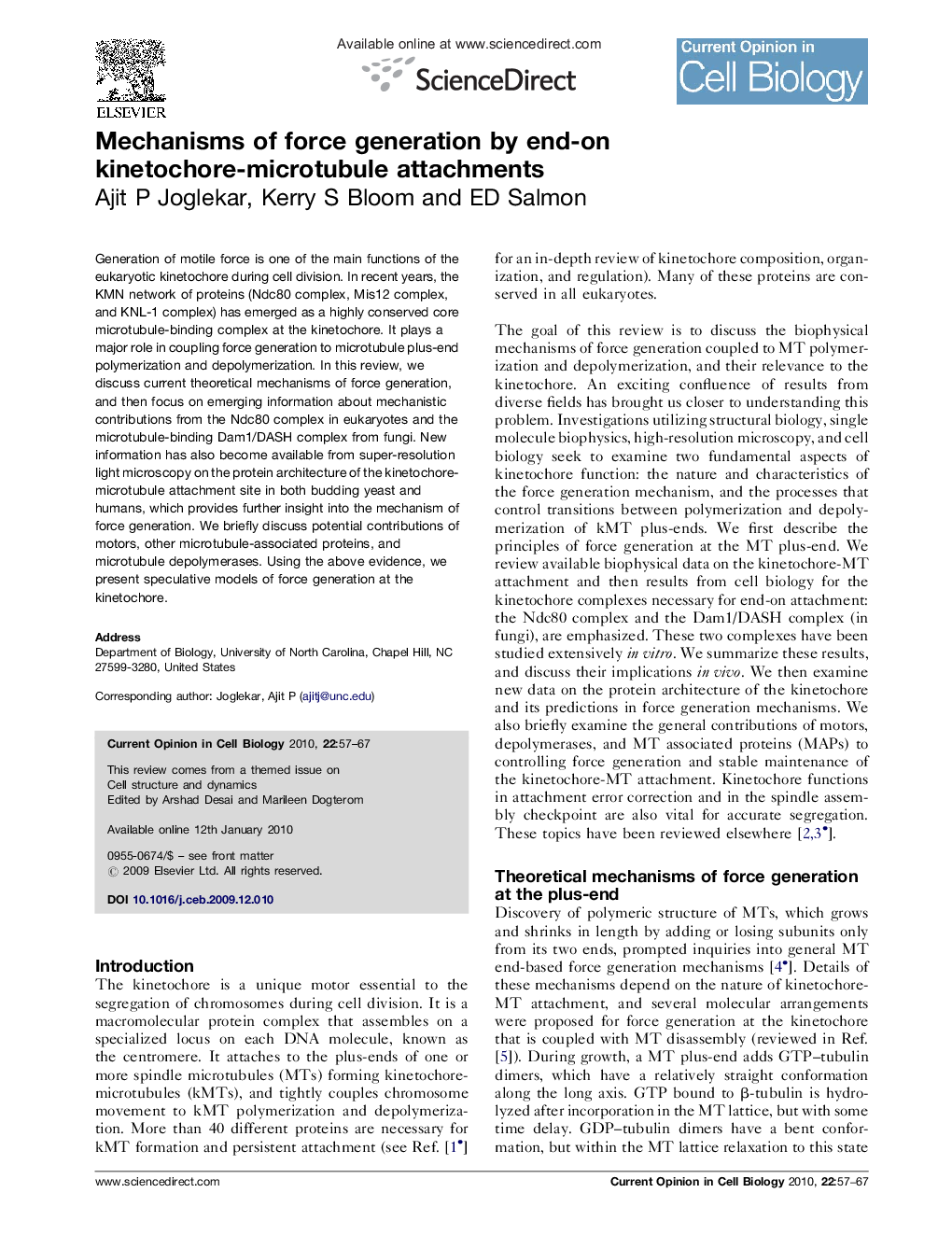| Article ID | Journal | Published Year | Pages | File Type |
|---|---|---|---|---|
| 2169911 | Current Opinion in Cell Biology | 2010 | 11 Pages |
Generation of motile force is one of the main functions of the eukaryotic kinetochore during cell division. In recent years, the KMN network of proteins (Ndc80 complex, Mis12 complex, and KNL-1 complex) has emerged as a highly conserved core microtubule-binding complex at the kinetochore. It plays a major role in coupling force generation to microtubule plus-end polymerization and depolymerization. In this review, we discuss current theoretical mechanisms of force generation, and then focus on emerging information about mechanistic contributions from the Ndc80 complex in eukaryotes and the microtubule-binding Dam1/DASH complex from fungi. New information has also become available from super-resolution light microscopy on the protein architecture of the kinetochore-microtubule attachment site in both budding yeast and humans, which provides further insight into the mechanism of force generation. We briefly discuss potential contributions of motors, other microtubule-associated proteins, and microtubule depolymerases. Using the above evidence, we present speculative models of force generation at the kinetochore.
